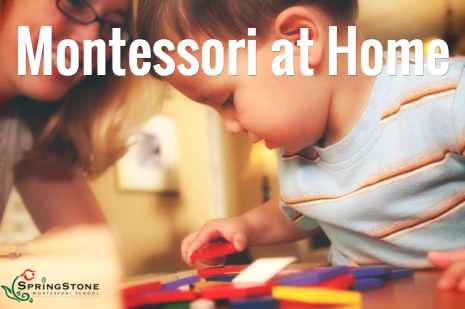Why are Real Materials so important in the Montessori Classroom and at home?
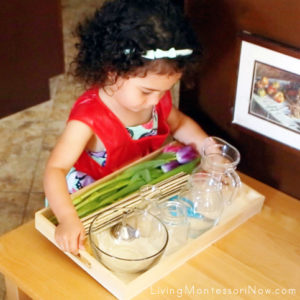 Why do Montessorians believe that all children should be allowed to work with real materials, real picture representations of animals, real glass, wood and metal utensils, instead of the ‘safe’ plastic substitutes?
Why do Montessorians believe that all children should be allowed to work with real materials, real picture representations of animals, real glass, wood and metal utensils, instead of the ‘safe’ plastic substitutes?
It is because we strive for children to build their reality of life through real experiences. What could be better than exposing our children to what they will be surrounded by as they grow up? Have you ever thought about that if your child is allowed to handle real-life breakable materials, they will develop the skills needed for care and attention when handling materials? Natural consequences are inherent in a Montessori classroom when items break, and the materials are no longer available to work with. Children love their materials, and with only one-of-a-kind material available, they naturally develop concentration, patience, respect for materials, self-control and precision.
One of the characteristics of a normalized child is their “attachment to reality”. We strive to provide real material as safely and practical as possible. We want children to develop real skills and habits for living in a real world.
There is absolutely nothing wrong with imaginative/fantasy play, however there is a time and a place for it. Play is the work of the child. Playful learning is accomplished through many aspects of the Montessori philosophy. Play is beneficial for children in a variety of developmental areas, and different types of play is associated with different stages. The Montessori Method of teaching is dedicated to meeting all of the developmental needs of the “whole child”. Montessori guides (the teachers in a Montessori classroom) must consider play as a developmental area. They observe and guide the children’s movements in the classroom to support their growth. These areas should contain the same preparation, analysis and sequencing as all other areas of the classroom.
By engaging in real activities with purposeful meaning, the children develop real abilities, which fosters their independence and control of their lives. These exercises help children adapt to their environment. The aim of these activities is both practical and developmental. They help build upon the children’s concentration, independence, self-discipline, among many other things.
Dr. Montessori emphasizes the use of real materials in the classroom. She believed that imagination is the natural inclination of the child; it stems from what is real. To stimulate children’s imagination, give them real objects and a real understanding of the world. While it is natural for children to be drawn to fantasy, it is the knowledge from the real world that can enrich their ability to imagine and create.
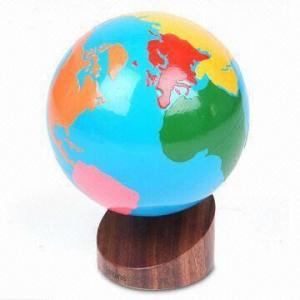 Dr. Montessori wrote: “Yet, when all are agreed that the child loves to imagine, why do we give him only fairy tales and toys on which to practice this gift? If a child can imagine a fairy and fairyland, it will not be difficult for him to imagine America. Instead of hearing it referred to vaguely in conversation, he can help to clarify his own ideas of it by looking at the globe on which it is shown.”
Dr. Montessori wrote: “Yet, when all are agreed that the child loves to imagine, why do we give him only fairy tales and toys on which to practice this gift? If a child can imagine a fairy and fairyland, it will not be difficult for him to imagine America. Instead of hearing it referred to vaguely in conversation, he can help to clarify his own ideas of it by looking at the globe on which it is shown.”
There are many things you can do to incorporate a sense of reality in your child’s home learning environment as well. Most importantly, the use of Practical Life (dish washing, care of environment, and so forth) is truly beneficial. This is probably one of the best ways to give your child real life experiences and help them obtain real life skills. Provide a basket with kitchen utensils for them to explore. Teach them to properly handle glass, instead of plastic cups. Instead of the plastic musical instruments that have over-stimulating lights and sounds, let your child experience real instruments. Plant a garden, let them work with the soil and care for real plants…the list is endless. It is important to encourage children to explore, to enter the world of real things and make genuine discoveries that will have value to them.
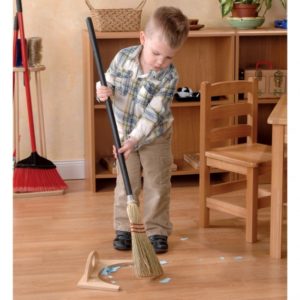
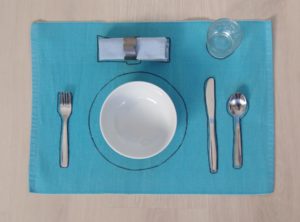
You can also review Tim Seldin’s book, How to Raise an Amazing Child the Montessori Way, and read about his thoughts on “Glass in the Home”. It is an interesting read and elaborates a little more on the points covered here!
Young children absorb and remember every nuance of their early home environments. The aim is for you to design activities that will draw your child’s interest and to create prepared surroundings that are harmonious and beautiful.
Montessori is beautiful! It gives the child the opportunity to work with real materials, in real life situations. Our goal is to teach the child life skills that can be used outside of the classroom. The best way to foster that type of learning is to attach them to the environment, and to their real surroundings.

